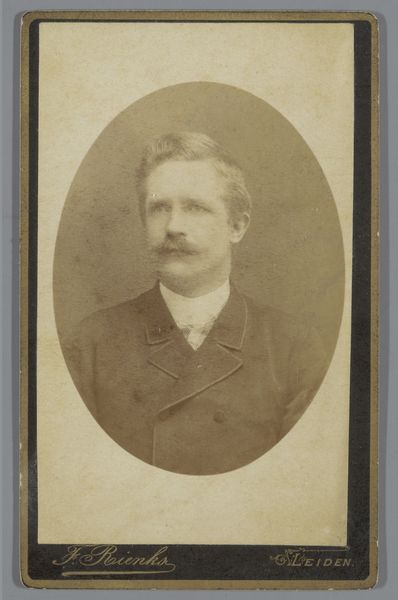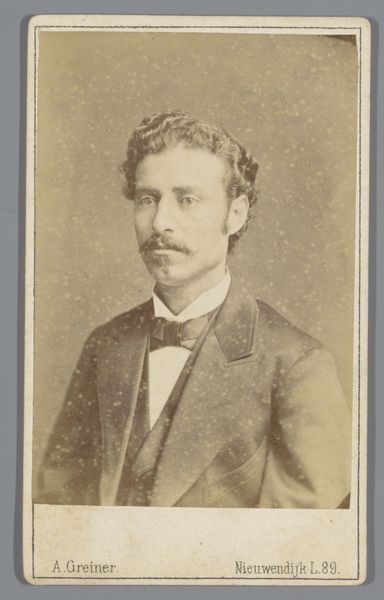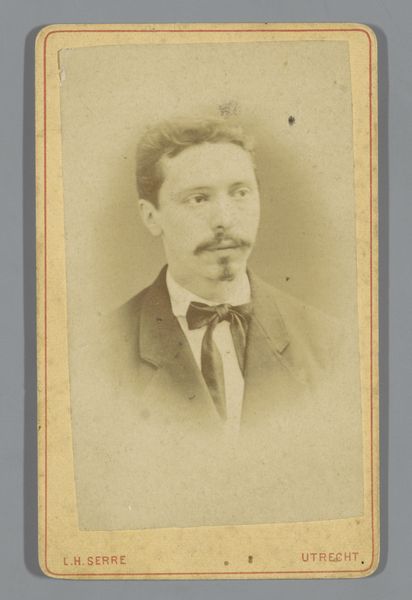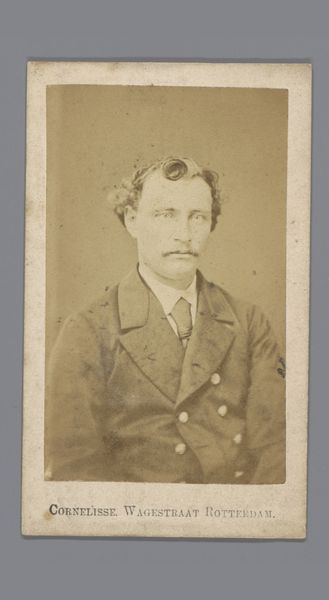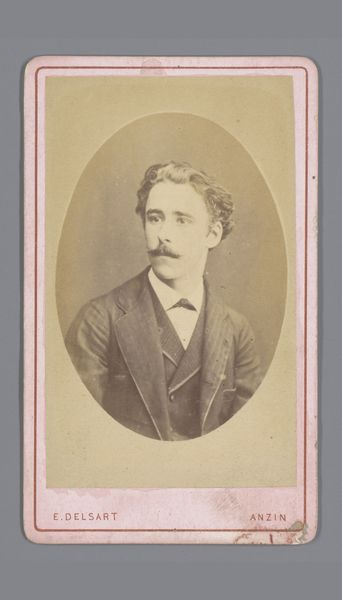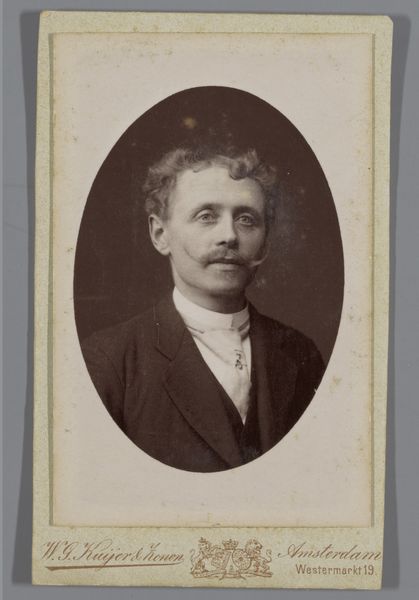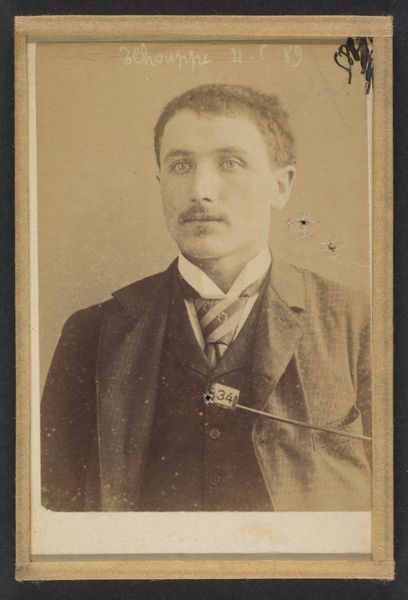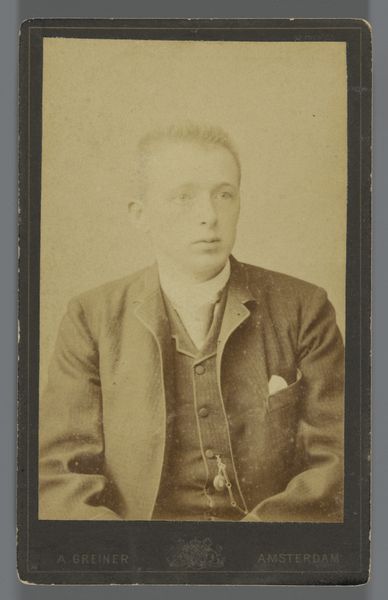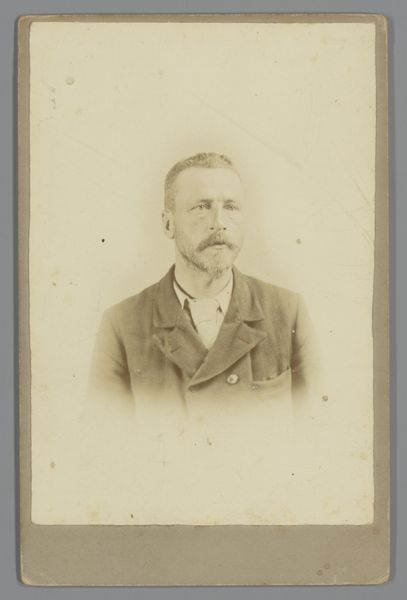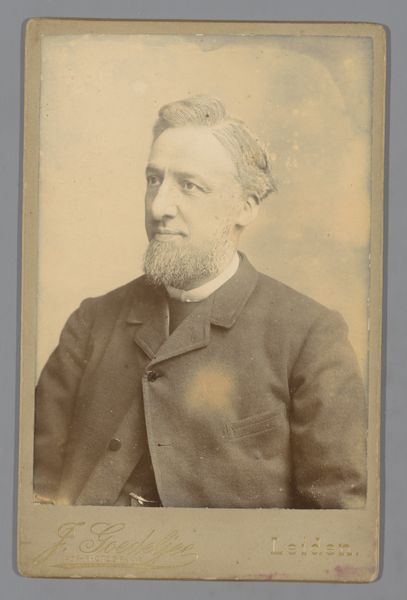
photography, gelatin-silver-print
#
portrait
#
photography
#
historical photography
#
historical fashion
#
coloured pencil
#
gelatin-silver-print
#
modernism
Dimensions: height 104 mm, width 65 mm
Copyright: Rijks Museum: Open Domain
Curator: Well, here we have "Portret van Frans Fokma," a gelatin-silver print from 1923 by H.W. Schrier. It's a captivating image, a small portal to a different era. Editor: There's a certain wistful quality about this image. He’s seated, leaning back against a chair, but looking off to the side. A pensive stillness... almost melancholic. It gives me the impression that Fokma wasn't entirely comfortable in front of the camera. Curator: It's interesting you say that. Given that this image comes from the modernist period, one could argue about representation here. Modernism emphasized subjective experience. The portrait may be staged and conventional, but how can that staging tell us about the modern life? Does it try to explore identity and individual experience in a rapidly changing world? Editor: Possibly. The lighting certainly plays a role. Soft and diffused, yet it catches the detail in his clothing – the texture of the tweed, for instance, speaks to his status, his place within society at the time. Curator: Absolutely. Photography then wasn't like the casual snapshots we take now. It was a carefully considered act, imbued with formality. Think about the sitter having to stay completely still for several moments for the picture to be taken. Editor: It makes you wonder about the power dynamics in that exchange. Fokma's gaze, averted as it is, does suggest a kind of resistance, or at least, a withholding of something. Perhaps this reveals how he felt being subjected to this "modern" mode of representation. Curator: Or maybe it was a trend in posing! But perhaps what interests me is whether the modernist agenda can meet traditionalist approaches. After all, the photograph itself has these swirling decorations and is an aesthetic exercise on its own. This gelatin silver print, beyond just capturing a likeness, reflects the socio-cultural context in which it was created. Editor: A delicate balance between conformity and self-expression, it seems. That knowing glance suggests so much, but at the end of the day we do not have much knowledge about the specific Frans Fokma here, and only have an insight on the values and expectations of the time period. Curator: Precisely! It becomes a springboard for reflecting on how we construct and perceive identities, even now. Editor: And isn't that the beauty of engaging with art from the past? To question, to explore, and to connect.
Comments
No comments
Be the first to comment and join the conversation on the ultimate creative platform.

